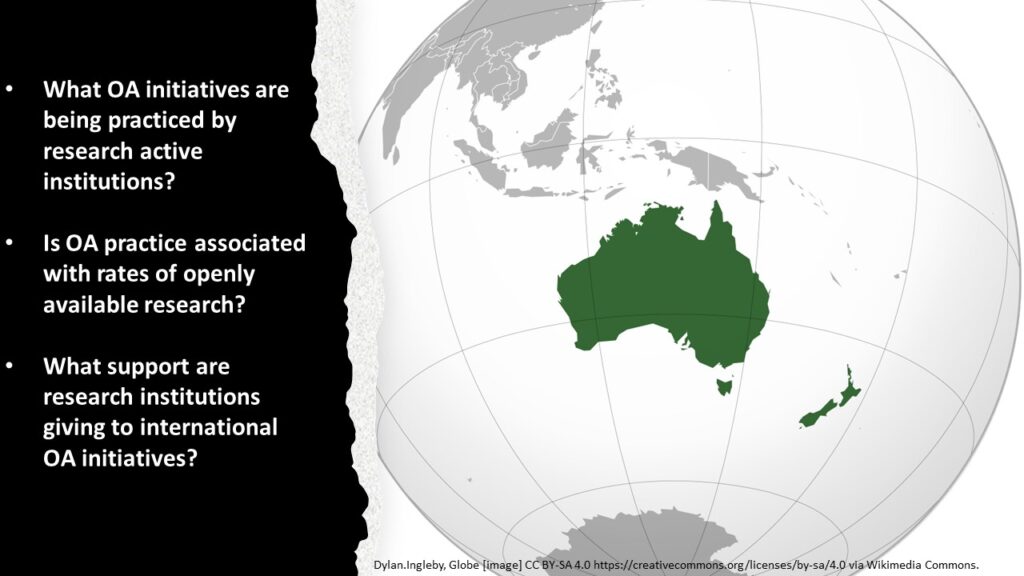
To date there has been no overarching examination of open access (OA) practice in Australia and Aotearoa New Zealand. An inventory of this kind is needed to assess our progress towards OA. This is more necessary than ever as national and international organisations show increasing commitment to open research following the 2021 UNESCO Recommendation on Open Science.
Last year we investigated 187 research active institutions across four sectors in the ANZ region to see what OA initiatives were being practised at the institutional level. We looked at universities and compared them with research institutions in the health, government and non-profit sectors to see if approaches to OA differed.
We found that – not surprisingly – universities had the greatest number of OA initiatives per institution but that the government sector showed considerable use of open repositories. The health and non-profit sectors showed much less OA practice at the institutional level. Across all sectors we found less publicly available OA policies than expected, fewer that dealt with open data, and very few policies showed any understanding of the issues around making Indigenous research and data open. Position statements were almost entirely absent. Repositories were ubiquitous for universities, often used by government research institutions for publications, grey literature and data, but mostly lacking for the other two sectors. Open publishing was mostly practised by the universities.
Interestingly, when we compared individual OA practice to the average rate of open research outputs using the Curtin Open Knowledge Initiative Open Access Dashboard, we found no obvious association between OA practice and OA outputs at the institutional level. The University sector had the greatest number of OA initiatives but had the lowest average rate of open research outputs of any sector. The health sector had a significantly greater average rate of OA outputs despite having the least number of OA initiatives.
All sectors utilised diverse routes to OA including various kinds of open journals, different types of repositories, preprint servers and other online avenues. Different sectors varied in their use of these multiple pathways. More than one route was often used simultaneously, resulting in considerable overlap. This makes it difficult to say definitively which routes to OA are used the most by any sector.
We also looked at regional support for external, international OA initiatives, and found it to be very low, except where it was coordinated by a central consortia such as CAUL.
The report is published under a CC BY 4.0 licence and can be viewed and downloaded here.
Catterall J, Barbour V. Open access initiatives by research active institutions in Australia and Aotearoa New Zealand: a snapshot of the landscape in 2022. Zenodo. June 26, 2023. doi:10.5281/zenodo.8081166
Results of the report were presented at Research Support Community Day 2023 on June 28th. The slides are available now. The recording will be available soon at https://www.youtube.com/@rscday